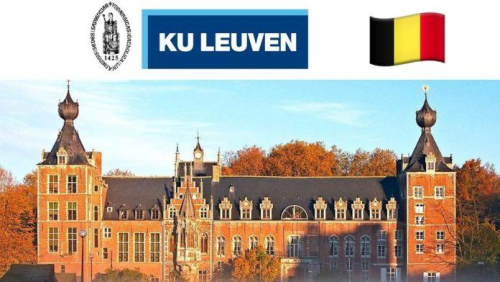Literature In English Keypoints: PROSE; Prose is a fundamental form of written or spoken language that lacks the metrical structure of poetry. It encompasses a wide range of literary works, including fiction and non-fiction, which convey narratives, ideas, and experiences through words.
Literature In English Keypoints: PROSE
Study Other Literature In English Keypoints Here
In this comprehensive overview, we’ll delve into various aspects of prose, including its types, narrative techniques/devices, textual analysis, and their application in understanding and appreciating literary works.
Types of Prose
Prose can be broadly categorized into three main types: fiction, non-fiction, and faction, each serving distinct purposes and employing different storytelling techniques.
i. Fiction: Fictional prose comprises imaginative narratives created by the author. It allows for the exploration of invented characters, settings, and events. Within fiction, there are several subtypes:
- Novel: A novel is a lengthy fictional narrative typically featuring a complex plot, multiple characters, and various themes. Examples include “To Kill a Mockingbird” by Harper Lee and “Pride and Prejudice” by Jane Austen.
- Novella/Novelette: These are shorter works of fiction than novels but longer than short stories. They often focus on a single character or theme in-depth. Examples include “Animal Farm” by George Orwell and “Of Mice and Men” by John Steinbeck.
- Short Story: Short stories are brief, self-contained narratives that usually focus on a single incident or character. They require conciseness and efficiency in storytelling. Examples include “The Lottery” by Shirley Jackson and “The Gift of the Magi” by O. Henry.
ii. Non-fiction: Non-fiction prose deals with factual information, real events, and real people. It aims to inform, persuade, or entertain readers with narratives grounded in reality. Common subtypes include:
- Biography: A biography is a written account of someone’s life, usually focusing on significant events, achievements, and personal details. Examples include “Steve Jobs” by Walter Isaacson and “The Diary of Anne Frank” by Anne Frank.
- Autobiography: An autobiography is a self-written account of one’s own life, providing insights into personal experiences, perspectives, and reflections. Examples include “The Autobiography of Malcolm X” by Malcolm X and “Angela’s Ashes” by Frank McCourt.
- Memoir: Memoirs are personal narratives that focus on specific events or periods in the author’s life, often offering reflections on broader themes or societal issues. Examples include “Educated” by Tara Westover and “The Glass Castle” by Jeannette Walls.
iii. Faction: Faction is a blend of fact and fiction, where real events or people are incorporated into a fictional narrative. This genre allows authors to explore historical or contemporary issues in a creative manner while maintaining a connection to reality.
Narrative Techniques/Devices
Narrative techniques are the tools authors use to convey their stories effectively and engage readers. These include:
i. Point of View: The perspective from which the story is told. Common points of view include:
- Omniscient/Third Person: The narrator knows and can reveal the thoughts and feelings of all characters. Example: “War and Peace” by Leo Tolstoy.
- First Person: The narrator is a character in the story, speaking directly to the reader using “I” or “we.” Example: “The Catcher in the Rye” by J.D. Salinger.
ii. Characterization: The creation and development of characters within a narrative. Different types of characters include:
- Round: Complex characters with depth, exhibiting a range of emotions and motivations. Example: Atticus Finch in “To Kill a Mockingbird.”
- Flat: Characters with minimal development, often serving a specific role or function in the story. Example: Mrs. Joe in “Great Expectations” by Charles Dickens.
- Foil: Characters who contrast with the protagonist, highlighting certain traits or themes. Example: Mercutio in “Romeo and Juliet” by William Shakespeare.
- Hero/Antihero: Protagonists who either embody traditional heroic qualities or deviate from them, respectively. Example: Harry Potter in the “Harry Potter” series by J.K. Rowling (hero) and Severus Snape (antihero).
iii. Language: The style and use of language to convey meaning, tone, and atmosphere. Authors employ various literary devices such as imagery, symbolism, and figurative language to enrich their prose and evoke emotions in readers.
Textual Analysis
Textual analysis involves examining the elements and structures of a literary work to uncover its deeper meanings and themes. Key components include:
i. Theme: The central idea or message conveyed by the text, which may be explicit or inferred. Themes can encompass a wide range of topics, such as love, justice, or identity.
ii. Plot: The sequence of events that unfold in the narrative, including exposition, rising action, climax, falling action, and resolution. The plot drives the story forward and engages readers in the unfolding drama.
iii. Setting (Temporal/Spatial): – Temporal Setting: The time period in which the story takes place, which can be historical, contemporary, or futuristic. Example: “1984” by George Orwell is set in a dystopian future. – Spatial Setting: The physical location or environment in which the story unfolds, which can influence the mood and atmosphere. Example: “The Great Gatsby” by F. Scott Fitzgerald is set in the affluent suburbs of New York City during the Jazz Age.
iv. Socio-political Context: The cultural, historical, and political circumstances that shape the narrative and characters’ experiences. Understanding the socio-political context can provide insights into the author’s intentions and thematic concerns.
Differentiation Between Types of Prose
Prose, as a literary form, encompasses various types, each with its distinct characteristics and purposes. Here, we’ll differentiate between the main types of prose: fiction, non-fiction, and faction.
1. Fiction:
Definition: Fictional prose refers to narratives that are created by the imagination of the author, featuring invented characters, settings, and events.
Characteristics:
- Imaginative: Fictional prose allows authors to create worlds and scenarios that may or may not reflect reality. It often involves elements of creativity and fantasy.
- Invented Characters: Fictional works typically feature characters who are products of the author’s imagination, with their own personalities, motivations, and conflicts.
- Constructed Settings: Authors of fiction build worlds, whether realistic or fantastical, to serve as the backdrop for their stories. These settings can range from familiar locations to entirely new realms.
- Plot-driven: Fictional narratives often revolve around a central plot or storyline, driving the progression of events and character development.
- Exploratory: Fiction allows authors to explore themes, ideas, and emotions in ways that may not be possible in non-fictional works.
Examples:
- To Kill a Mockingbird by Harper Lee
- 1984 by George Orwell
- The Lord of the Rings by J.R.R. Tolkien
2. Non-fiction:
Definition: Non-fictional prose deals with factual information, real events, and real people, aiming to inform, persuade, or entertain readers with narratives grounded in reality.
Characteristics:
- Factual: Non-fiction works are based on real events, people, and experiences, providing accurate information and insights into various subjects.
- Authenticity: Authors of non-fictional prose strive to present truthful accounts and perspectives, often supported by research and evidence.
- Informative: Non-fictional texts serve educational or informational purposes, offering readers opportunities to learn about different topics, experiences, or perspectives.
- Varied Forms: Non-fiction encompasses a wide range of genres and forms, including biography, autobiography, memoir, essays, and journalism.
- Reflective of Reality: Non-fictional prose often reflects the social, cultural, and historical contexts in which it is written, providing readers with insights into real-world issues and phenomena.
Examples:
- The Diary of Anne Frank by Anne Frank
- The Autobiography of Malcolm X by Malcolm X
- Sapiens: A Brief History of Humankind by Yuval Noah Harari
3. Faction:
Definition: Faction is a blend of fact and fiction, where real events, people, or settings are incorporated into a fictional narrative.
Characteristics:
- Hybrid Nature: Faction combines elements of both fiction and non-fiction, weaving together factual and invented elements to create a cohesive narrative.
- Historical or Contemporary Context: Factional works are often set against a backdrop of real-world events, allowing authors to explore historical or contemporary issues in a creative manner.
- Interpretive: Factional prose offers authors the freedom to reinterpret or reimagine real events, providing alternative perspectives or insights into historical or current events.
- Ethical Considerations: Authors of factional works must navigate ethical considerations surrounding the portrayal of real people and events, balancing factual accuracy with artistic license.
Examples:
- In Cold Blood by Truman Capote
- The Underground Railroad by Colson Whitehead
- The Paris Wife by Paula McLain








